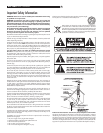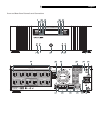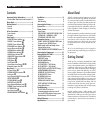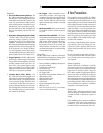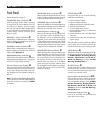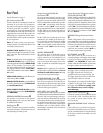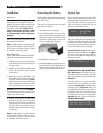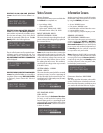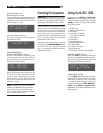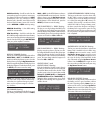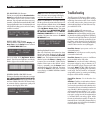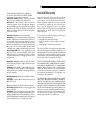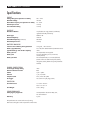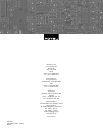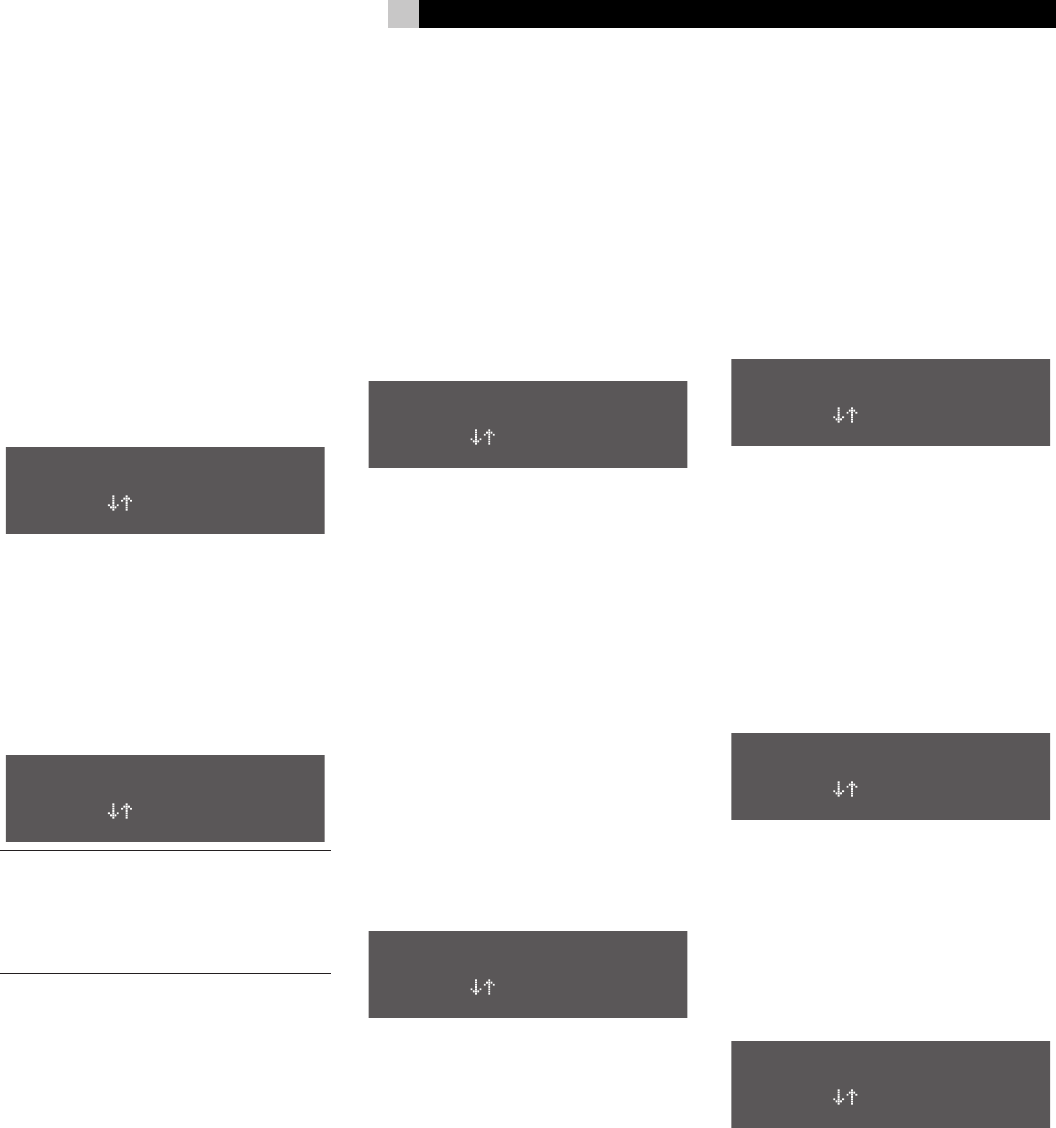
11
English
HIGH Sensitivity – should be used when the
connected equipment is sensitive to momentary
low voltage or brief power fluctuations. In HIGH
Sensitivity the unit is very sensitive to voltage
distortion and is, therefore, more likely to switch
back and forth to battery power than it would
under a MEDIUM or LOW sensitivity setting.
MEDIUM Sensitivity – is the default setting
suitable for most situations.
LOW Sensitivity – should be used when the
RLC-1080 frequently switches to the internal battery
power source even though the input voltage appears
normal. Example: If the unit goes ON BATTERY
when your power amplifier is turned on.
DISPLAY DIMMER Setting
This lets you set the brightness level of the VFD to
HIGH, LOW, or OFF. Use the SETUP button to
advance to the Display Dimmer screen. Once the
display is shown, pressing the Up/Down Arrow
buttons changes the brightness of the display. Once
the Display brightness is at the desired level, press
the SETUP push button to store the setting.
Note: Even when the display dimmer is set to
OFF, the screen will turn back on momentarily
when there is a significant change in system
status, such as a power outage or a low bat-
tery condition.
LED DIMMER Setting
This lets you set a brightness level of the front-panel
light emitting diode (LED) indicators to HIGH,
LOW, or OFF. Use the SETUP button to advance
to the LED DIMMER screen (not shown). Once the
display is shown, press the Up/Down Arrow
buttons to set the brightness of the LEDs. Once the
LED brightness is at the desired level, press the
SETUP push button to store the setting.
GO TO BATTERY IF > XXXV Setting
This lets you set a high voltage threshold for the
unit. If the power input voltage goes up to the level
set on this display screen, the RLC-1080 switches to
Internal Battery power. The input voltage when this
happens can be set from 134 to 144 volts.
GO TO BATTERY IF < XXXV Setting
(Display example not shown.) This lets you set a
low voltage threshold for the unit. If the power input
voltage goes down to the level set on this display
screen, the RLC-1080 switches to Internal Battery
power. The input voltage when this happens can
be set from 90 to 100 volts.
OUTLET DELAY1 and
OUTLET DELAY2 Setting
(Only the Outlet Delay1 display screen is shown)
This lets you set the amount of time that elapses
( from
0 to 10 seconds) before the RLC-1080
provides power to the rear panel outlets marked
Delayed1 (TUNER/AUX) and Delayed2
(SUBWOOFER and/or AMPLIFIER). By
setting this delay, it prevents power on or power
off glitches from effecting other equipment con
-
nected to the unit.
LOWBATTWARNING: XMIN Setting
This lets you set the unit to sound an alarm when
the RLC-1080 is running on battery power and
available power from the Battery Pack drops
to or below the setting (
2 to 25 minutes). For
example, if this warning is set to three minutes,
and the RLC-1080 is running on battery power,
the alarm sounds when the power remaining in
the Battery Pack can power the system for only
three more minutes. This gives you time to turn off
the components of the system before the Battery
Pack is depleted.
BATREPDATE: XX/XX/XX Setting
This lets you store the exact date a replacement
Battery Pack is installed in the unit. After using
the Setup button to access this screen, use the
Up/Down Arrow buttons to set the correct
month, then press the SETUP push button to move
the cursor to the day of the month field. Set the
day of the month using the Up/Down Arrow
buttons. Press the SETUP button again to move
the cursor to the year field, then set the year using
the Up/Down Arrow buttons.
DO QUIK SELFTEST Screen
This lets you manually initiate a self-test to see that
the battery pack is in good condition and that
the unit is operating properly. Note: Once you
advance to this screen, press either Up/Down
Arrow buttons to start the Selftest. During the
Selftest the same screens described in the System
Test section of this manual are displayed.




